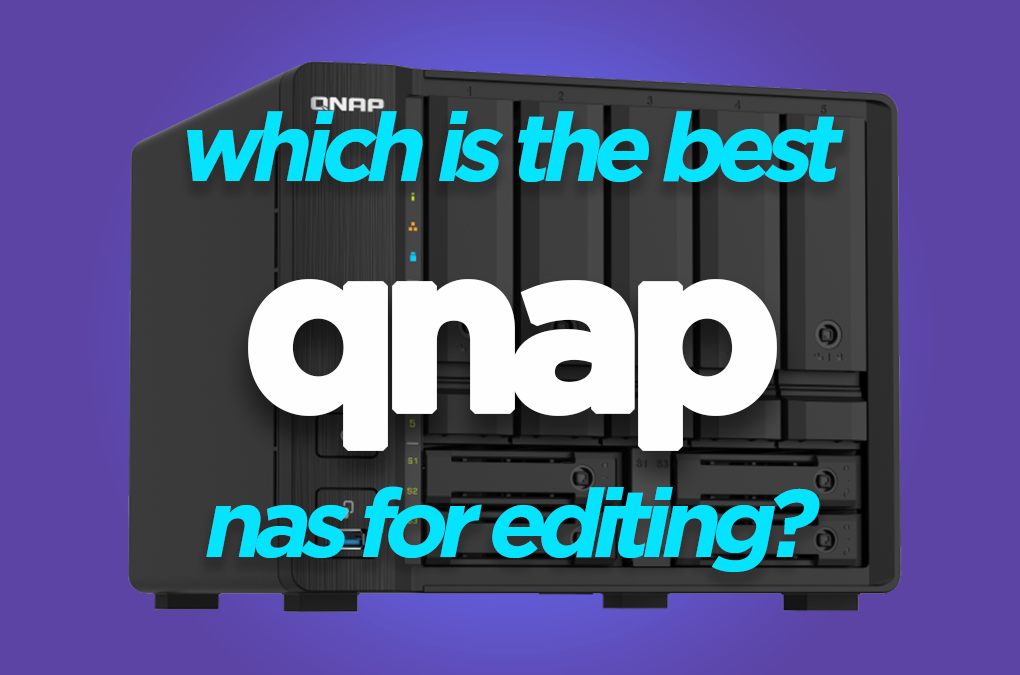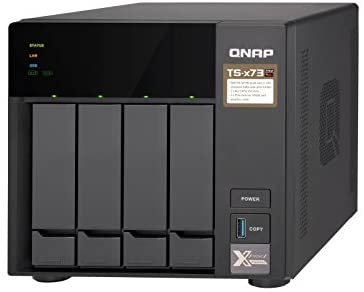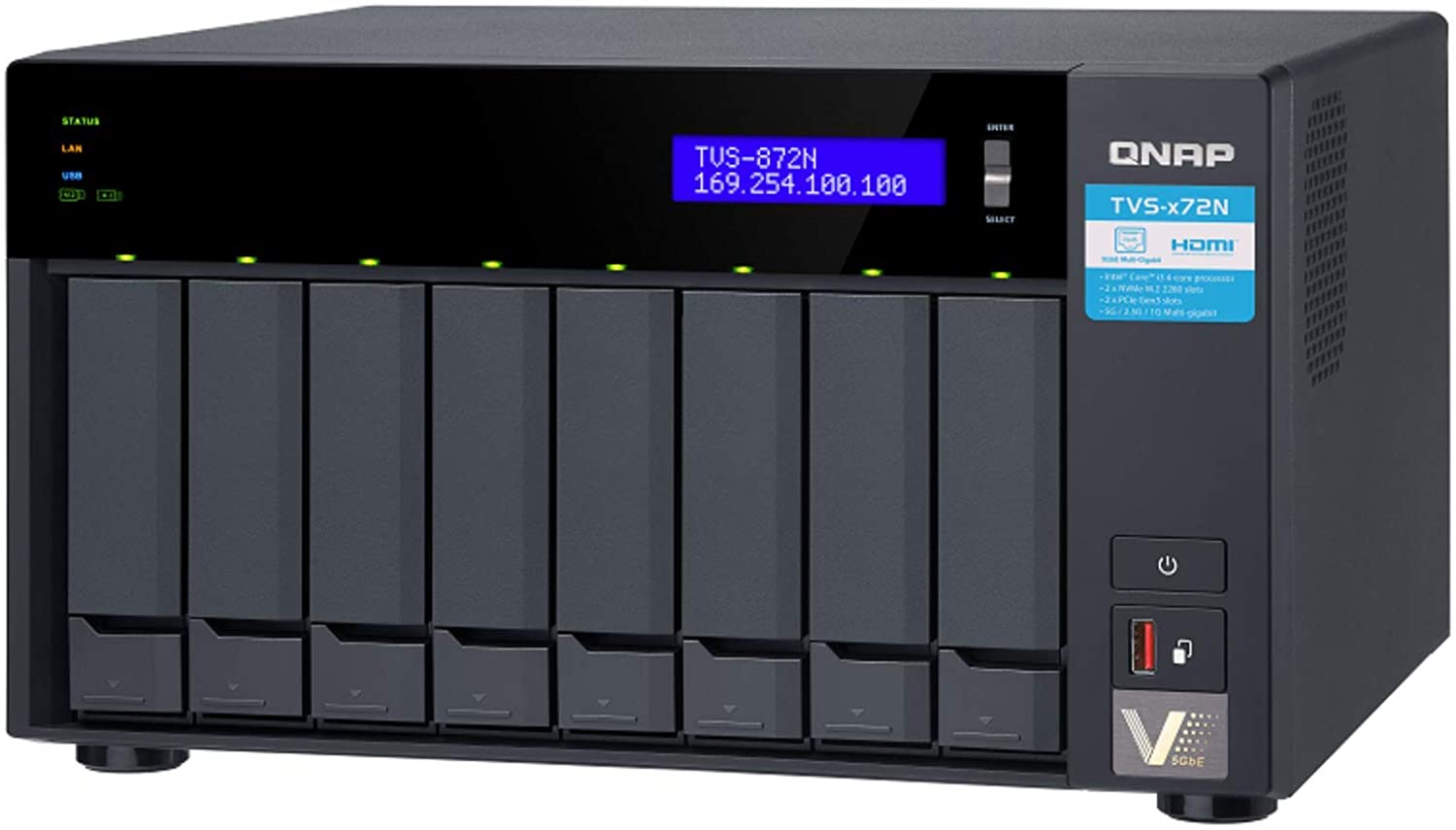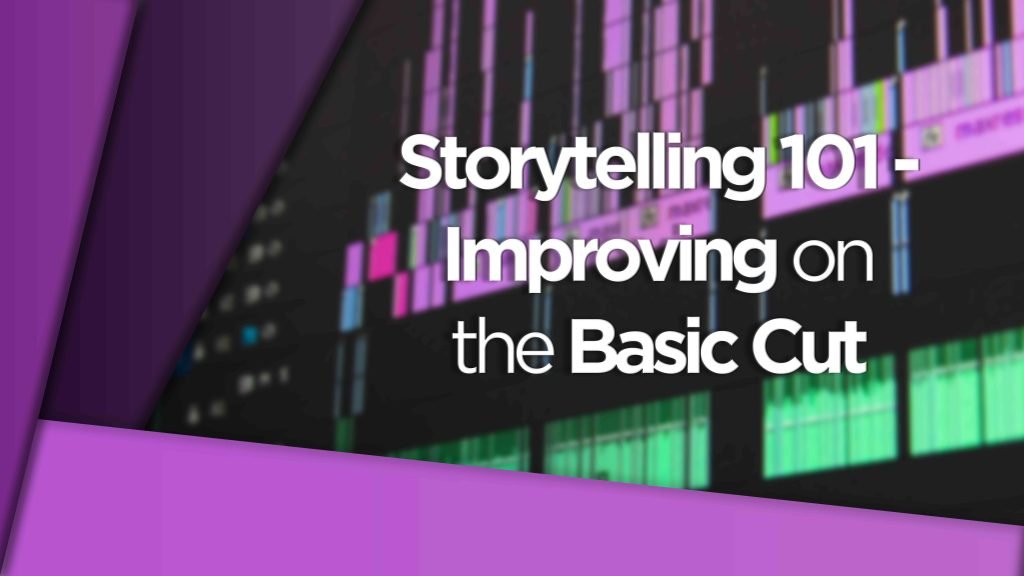The Best QNAP NAS System for Video Editing
You’ve decided that it’s time to ditch external hard drives and go for a NAS system. You need to upscale your media storage facilities to grow your post-production but you’re not sure of the right QNAP NAS to choose for the job?
You also want the ability to have multiple editors working from the same shared storage but need a NAS system that is up to the job of delivering speeds capable for HD and 4K footage in realtime?
Well, you’ve come to the right place. Unless you’re after a Synology NAS. In that case you should check out my guide to the best Synology NAS for Video Editing:
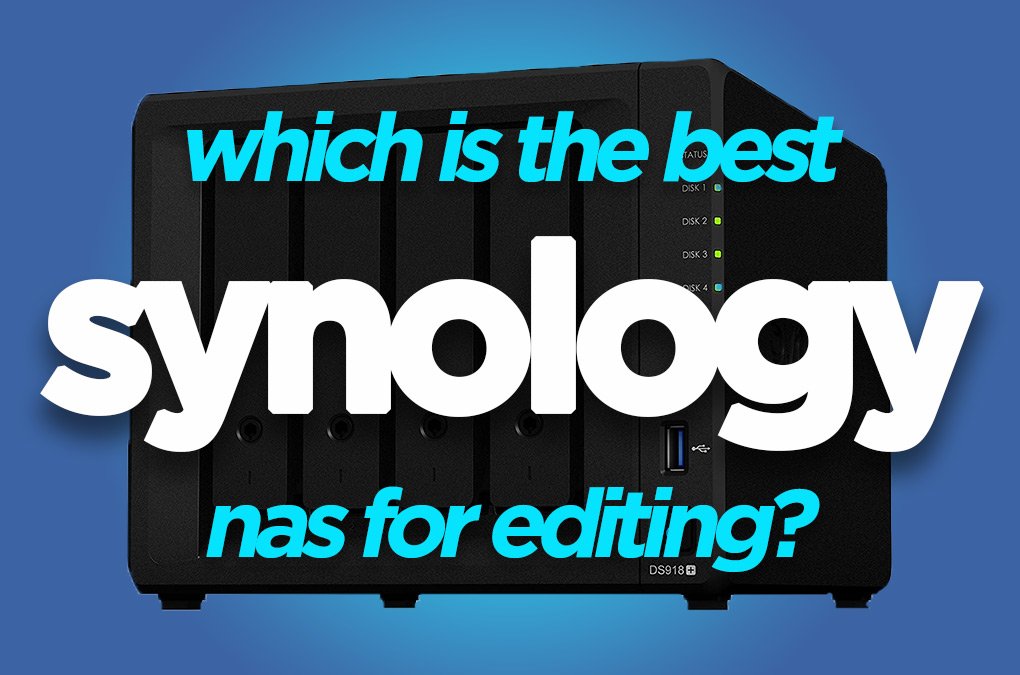
Back to QNAP.
I’ve got a selection of QNAP NAS systems that will suit teams from 2 editors up to 10 and beyond. Let’s dig in to see which is the right option for you and your team.
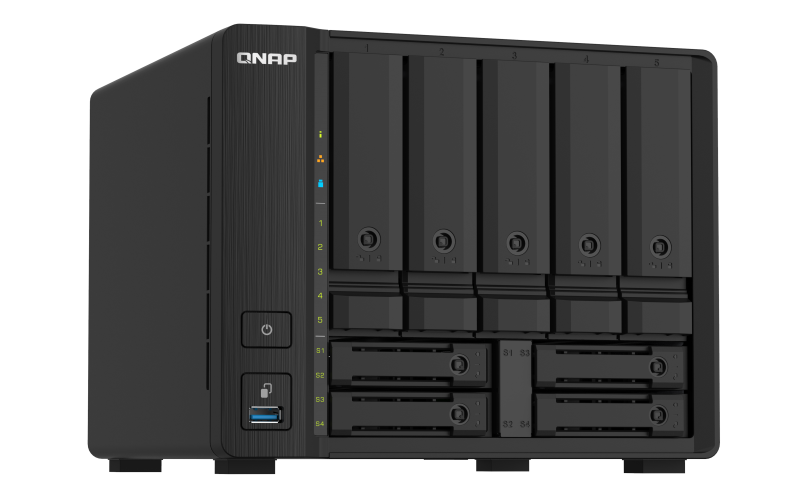
How do I know what I’m talking about? Head to the DigiProTips Experience and Background page to find out how I’ve built up my knowledge over a career spanning feature film, broadcast TV and digital content production.
Watch the Video
What is a NAS?
For a more in-depth answer to this question take a look at my Storage Solutions for Large Post-Production Setups post:
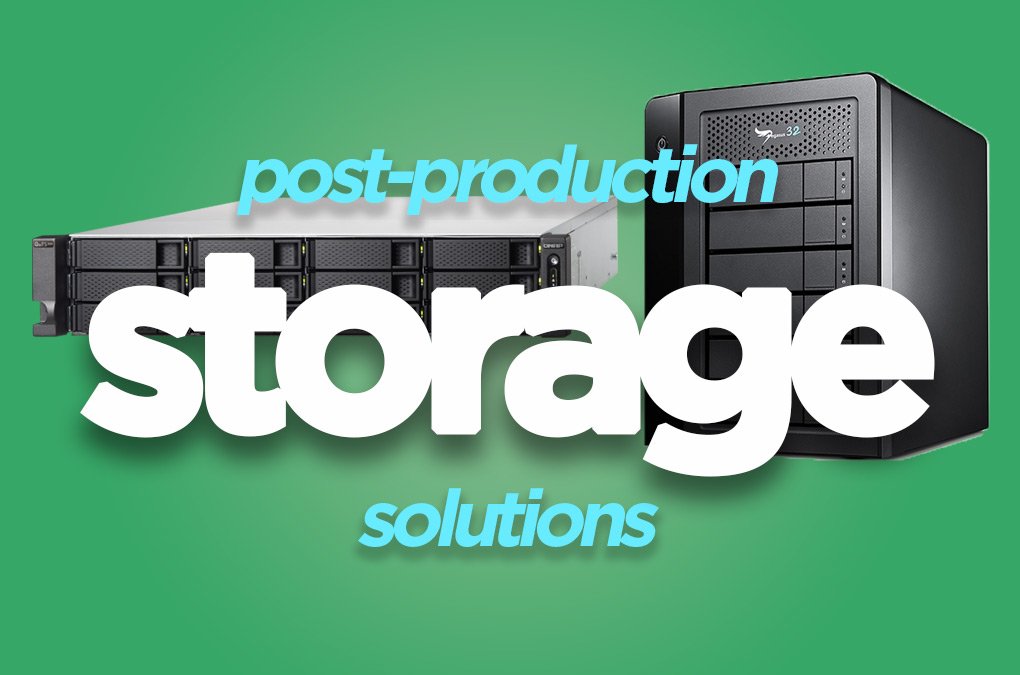
But for a quick overview now, a NAS is essentially a small computer, that houses a large array of hard drive disks, all connected to form one storage pool. This storage is then accessible to any computer on your local network and if needed, can be accessed remotely from anywhere around the world also.
In more specific terms a NAS stands for ‘Network Attached Storage’. A NAS is usually a small desktop enclosure or a rackmounted enclosure that holds anywhere from 1-24 bays for HDDs or SSDs. The se enclosures have a small motherboard, CPU (sometimes a GPU as well), RAM, network card and generally no viewer interface port. The reason for not having an interface is because the computer runs its own operating system and can be accessed from any web browser on any computer on your network once the NAS is connected to your network.
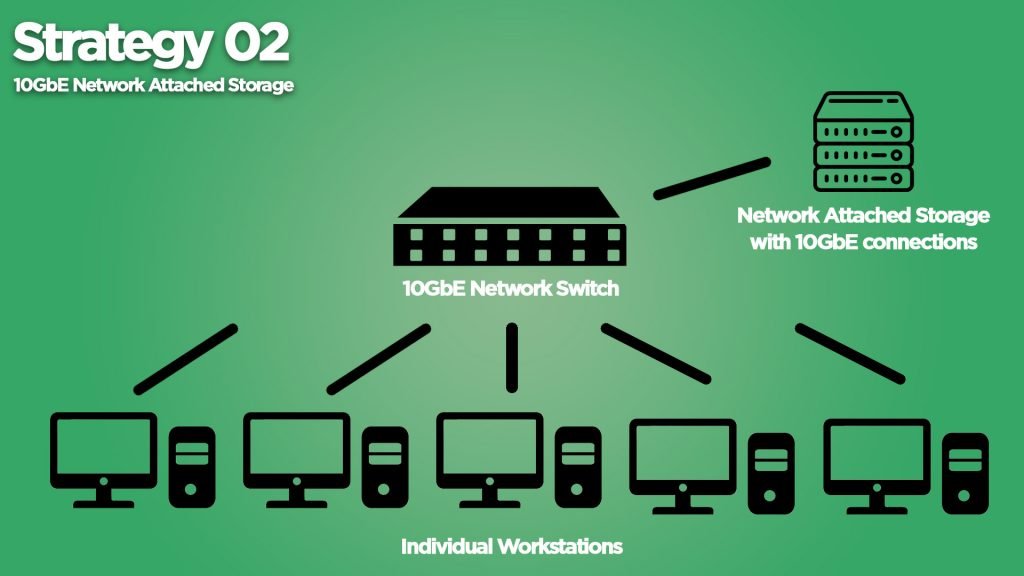
NAS systems can store anywhere from a few Terabytes of data up to Petabytes of files and media on your local network.
NASs can be setup in a variety of RAID levels (check my other article on post-production storage for more details on RAID levels) or it can be set up to just use the hard drives as they are, without failure tolerance. An example being, to have a QNAP NAS set up in a RAID 10 configuration, you could have disk mirroring and striping, which protects your NAS system from corruptions and disk failures. High disk performance tasks, such as video editing, are also optimised for using QNAP’s tiering RAID system.
Why QNAP NAS Systems?
QNAP have been in the NAS game for years and they have a great reputation among network enthusiasts and engineers for having more control over finer details of the systems than their main rivals, Synology.
I changed over to using a QNAP NAS for my Production and Post-Production teams in 2019 after years of using Synology. I use them so often now that I even have a small personal NAS setup at home for my own network. Between Synology and QNAP as the best NAS for video editing, it’s a close tie but for advanced features and hardware add-ons then QNAP NAS systems just about win.
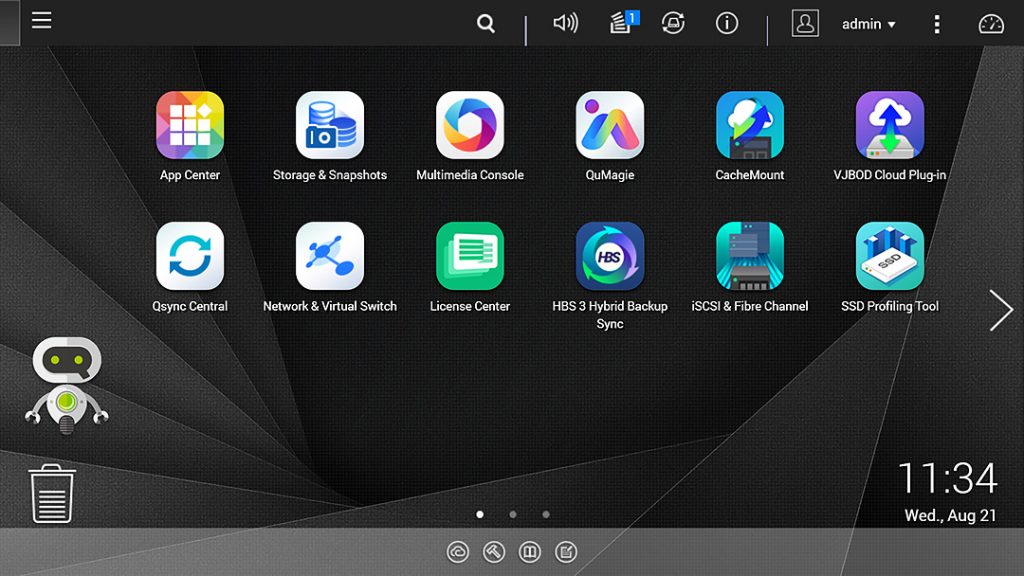
QNAP QTS, which is their own branded operating system, allows you to modify the setup of the NAS system for your own personal or departmental needs. You can add security parameters for individual users, set up FTP or VPN servers, have cold storage cloud backups running nightly and many more aspects that make QNAP NAS’ more than just an external drive.
QNAP’s QTS system also come with a whole suite of reliable and useful apps that you can install if you so wish. These range from cloud storage services (leveraging your NAS as the remote storage medium) to email and web hosting or using it as a multimedia server.
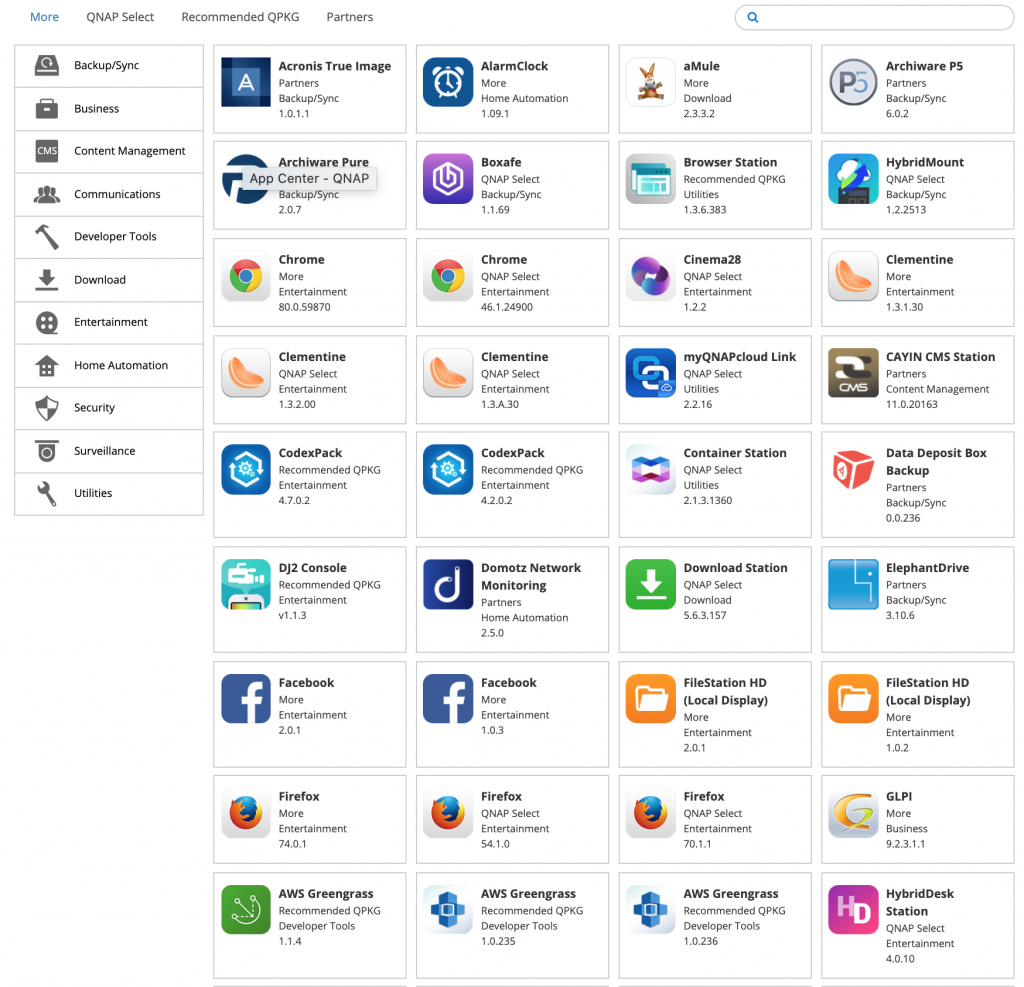
One of the most useful features is the ability to add users and groups of users, with their own login details and also their own file permission privileges on the NAS system. That means that freelance or junior members of staff can only access the files and folders that you give them access to!
So, if you have a new Edit Assistant starting or an intern who doesn’t need to see previous project folders or sensitive material to the company, then they can have their own access to the files and media they need to do their job and no further. This is for me is a big feature that makes QNAP’s the best nas for video editing. Security is always a top priority for me.
What Advantage Does a NAS Setup Have Over Video Editing From External Hard Drives?
Simplicity, organisation and speed!
NAS enclosures are made to do one thing and one thing only… centralized storage. And that’s exactly what they do!
Using external hard drives to edit from opens you up to a whole host of issues. Such as; backing media, losing drives, damaging them or media getting corrupted. QNAP NAS enclosures have backup facilities specifically for these issues and by using RAID setups you have failure tolerance should a disk go bad.
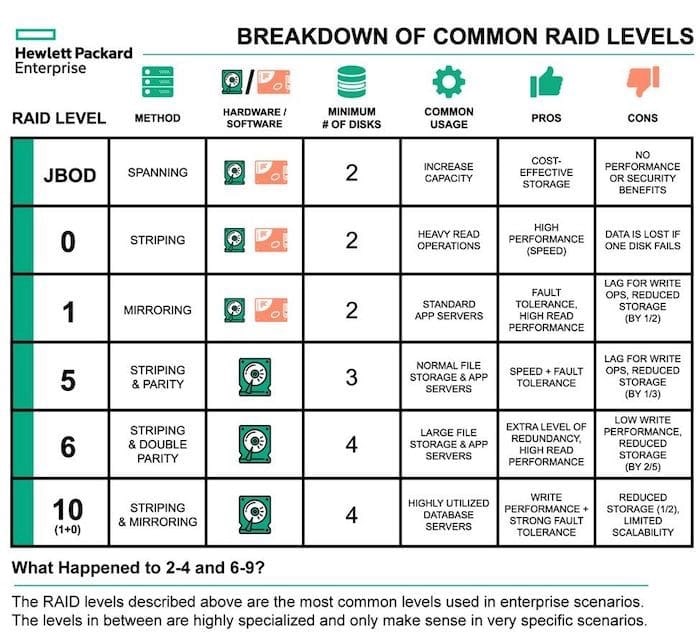
Trying to find specific files and media in your stack of drives can become nothing short of a headache. NAS systems have in-built search functionalities. So you can find any file or folder from any project, year or archive that you need.
Daisy-chaining drives together to access multiple drives at the same time is a thing of the past with NAS systems as well. Connectivity is the aim of the game with NAS’, you won’t have to hunt for the correct USB-3/C/A/B connector anymore (we all know what a pain that is). NAS boxes just connect via ethernet to your LAN switch and you then connect all your computers to that same network switch, you will have instant access to your NAS and all the media within in it, instantly. Easy, right?
The speed of the connection type you are using and having to wait minutes, if not hours sometimes, to transfer media between drives and computers, is also a thing of the past. With network attached storage, the only limiting factor to the speed of access to your files, is the type of NAS you buy, your network hardware and your computer network cards.
However, right off the bat I can pretty much guarantee that your computer will have at least a gigabit ethernet network card in it. Your network will more than likely be running at gigabit speeds too. That means you have 100MB/s up and down (theoretically) for bandwidth. High definition footage, editing in realtime, will take around 20-40MB/s of bandwidth.
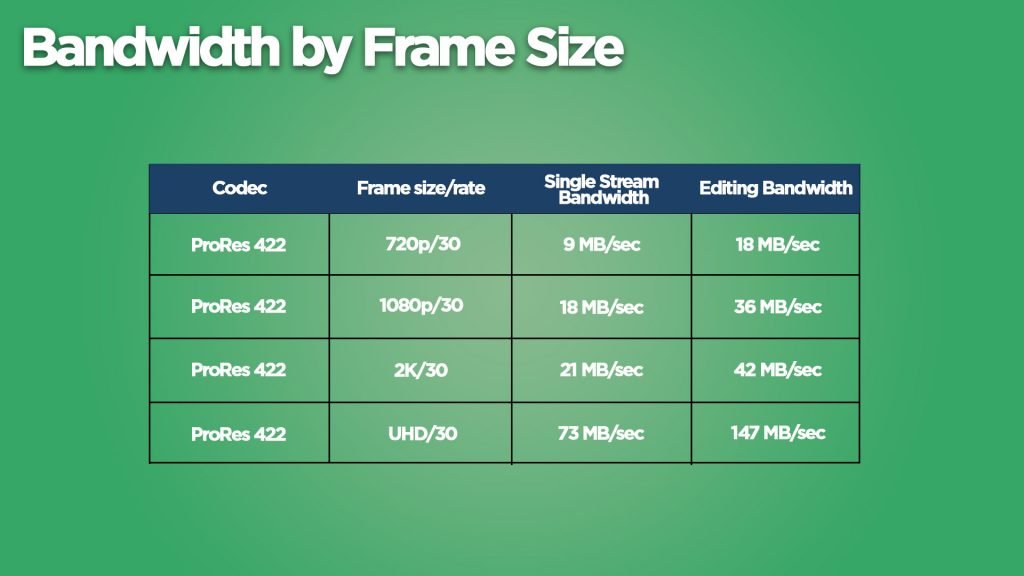
You therefore could have 3-4 computers connected via gigabit ethernet to a NAS and all be editing HD footage in realtime. I wouldn’t recommend you try this (ideally you’d have more bandwidth for that many people) but for a couple of people, it’s more than doable!
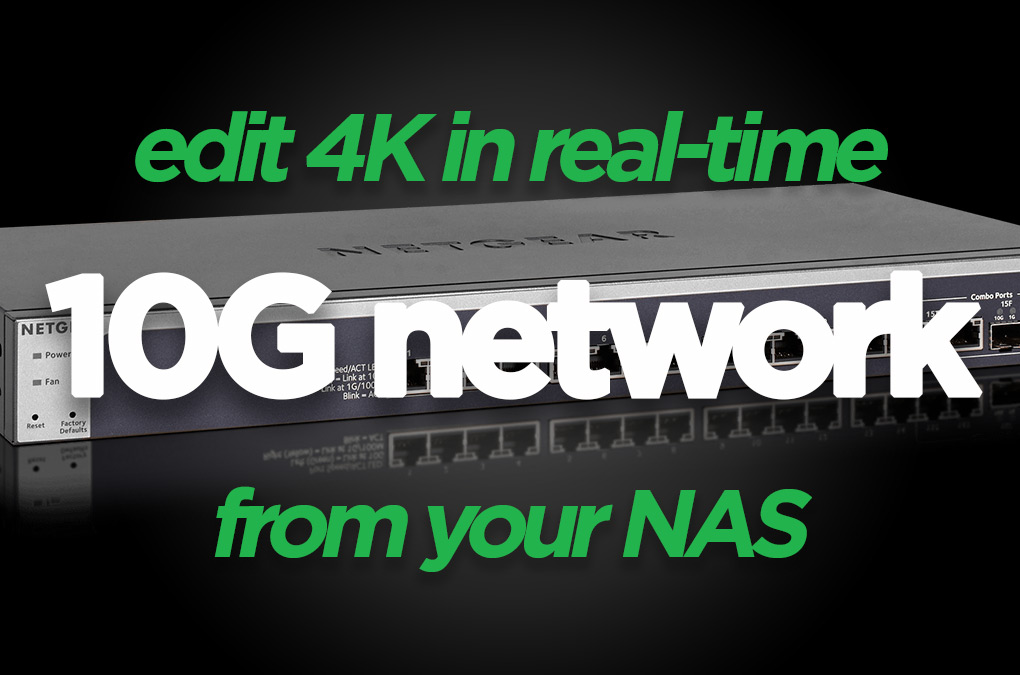
For teams expanding beyond this and certainly for 4K/UHD video editing in realtime, then the value of moving to a 10GbE network far outweighs the initial setup costs. This is covered in the Large Post-Production Storage Solutions article:

With a QNAP NAS 10gb ethernet setup you have 1000MB/s of available bandwidth meaning you could have 5-6 editors editing 4K/UHD footage in realtime. If you get a NAS system with two 10GbE connections (which is becoming more and more common to find) then you can bond the two connections to become one and have 20Gbps bandwidth available. Increasing your team size of editing 4K footage up to 10-12 users.
That’s an incredibly fast setup and something certainly not doable with external drives! Choosing the best NAS for video editing is going to be your biggest problem because it really will completely transform your video editing storage workflow and do away with years of external hard drive headaches. It’s a good job I have a nice selection for you to choose from then!
So, Which is the Best NAS for Video Editing For My Team?
Well, that depends on your team size and your current network setup. I’m going to work on the assumption that you have a gigabit network setup and all computers and cabling is capable of carrying 1000Mbps.
DISCLAIMER: This post may contain affiliate links. We make a small commission if you buy the products from these links (at no extra cost to you). As an Amazon Associate, I earn from qualifying purchases. But we only recommend products we would use ourselves. For more information, click here to see our disclosures.
Note. If your setup is missing a piece of the pie in terms of a gigabit setup then you will simply need to either purchase a new gigabit switch, in either 5ports, 8ports, 16ports or 24ports. Depending on how many physical connections you need (remember to include your NAS and any other WiFi routers, printers etc that need to be connected to the switch too). You will then need CAT6 ethernet cabling to ensure maximum throughput of 1Gigabit around your network.
QNAP TS-253E – For Personal or 1-2 Users
The QNAP TS-253E is a fantastic choice for a first NAS enclosure. The unit features 2 bays so you can have failure tolerance split over two disks. (I would never recommend getting a 1 bay NAS as that is essentially an external hard drive but network enabled, it has not got backup/failure support.)
The unit can therefore hold up to 16TB with RAID levels setup to mirror your two 16TB disks. That should be more than enough for personal use or a small team of two editors sharing media.
If you are looking to get faster access speeds from this unit then it also has an optional PCIe slot for adding M.2 SSD drives, for advanced SSD caching.
With two 2.5GbE LAN ports the unit can easily handled 4K/UHD realtime video editing for 1-2 users or you can bond the two ports to create a 5GbE connection. You would need more than the Gigabit network setup to utilise these speeds though. If you have 10GbE set up then the optional PCIe slot could be used for a 10GbE network card instead.
The unit should get a small post-production team off the ground very easily and it retails for around $600/£550 without disks. It is also the best QNAP NAS for home use, in terms of video editing.
QNAP TS-473A – For Teams of 1-4 Users
The QNAP TS-473A is a desktop mounted NAS enclosure that can hold up to 4 disks. This means if you get 4 x 16TB drives you can store up to a maximum of 64TB without any RAID level setup.
However, with a 4 bay QNAP NAS RAID 10 setup you would be able to capitalise on data mirroring and striping for performance and data backup. RAID 10 requires at least 4 disks to set up.
The TS-473A also has four 1GbE LAN ports with link aggregation abilities so you can create a 4GbE bond. Again, you would need more than a Gigabit network setup to utilise that bandwidth effectively.
This is more than enough for 4 Editors editing HD footage in realtime, at the same time! It would also let 2 editors edit UHD footage in realtime.
The TS-473A is great for a small to medium post-production studios looking to ditch their external hard drive dependancy and start working from shared local storage. The unit is currently retailing for between $750/£800 without disks (I’ll include a section on the disks I use and trust below).
QNAP TVS-872X – For Teams of 4-10 Users
The QNAP TVS-872XT is a medium tier NAS that is still in a desktop form factor. It has 8 bays that can store HDD or SSDs (with the option of an SSD cache for optimized caching via one of the PCIe slots) upto 128TB using 16TB drives.
The TVS-872XT comes with 10GBASE-T high bandwidth ethernet, which would let 4-10 users edit HD footage in realtime over a 10GbE connection. However, if you are looking have more users editing 4K/UHD footage in realtime then you can add an additional 10GbE M2 card to in the TVS-872XT (it is a very easy to install PCIe card inside of the NAS enclosure) to get another 10GbE connection.
The unit is currently retailing for between $2100/£2200.
QNAP TS-h1277XU – For Teams of 10+ Users
The QNAP TS-1277XU features an AMD Ryzen™ 7 3700X 8 cores/16 threads 3.4 GHz processor, 128 GB DDR4 memory (4 x 32 GB), 2x 10GbE SFP+ ports and 12 bays for up to 192TB of storage.
If you have more than 10 users in your post-production team and you need scalability then look no further than the TS-h1277XU for value for money.
This NAS system is the only QNAP rackmount format in this list. Once you get to this scale you need to be looking at a comms cabinet and mounting your NAS securely in there. The unit will benefit from passive cooling and shorter connection distances.
With 12 bays the unit isn’t short of storage space. If you had no RAID levels set up on it (highly discouraged) you could have up to 192TB of storage with 12x 16TB HDDs.
With this many bays I would definitely recommend looking at setting it up as a QNAP RAID 10 level NAS system, to get the real benefit of all that optimized storage.
The CPU inside this QNAP NAS enclosure is nothing short of ‘beefy’. The AMD Ryzen™ 7 3700X 3.4 GHz is an 8 core processor that will give your NAS operations more than enough juice to fly. Running multiple apps, read/write operations and anything else you need to do won’t be an issue with this CPU.
One of the best features of the unit, from our point of view, is the two 10GBase-T ports. These can be bonded to create a 20GbE connection. That means you have 2000MB/s throughput to your network. You will need a 10GbE network switch and CAT6.A and above ethernet cabling, plus 10GbE enabled PCs or 10GbE adapters to use this functionality but if you are at this level it doesn’t make sense not to go down the 10GbE route when you have 10+ users all editing from the QNAP.
With that setup you could have 10 Editors all with 200MB/s each to play with. That’s more than enough to edit ProRess 422 4K footage in realtime.
The unit, without disks, is retailing for between $5500/£6500.
TS-H1290FX – SSD NAD Built for Video Editing
Take on demanding collaborative projects such as editing 8K videos by enhancing your office or studio's network storage capacity. Designed to support all solid-state storage devices.
I attended MPTS in London this year and I visited the guys at the QNAP stall.
They introduced me to the behemoth that is the TS-h1290FX. It’s built specifically for media professionals and the internals of this enclosure will blow you away.
This NAS is an SSD only NAS, no HDDs allowed.
It means business!
It supports the all new U.2 NVMe Gen 4 SSD storage, its equipped with an AMD 16 core 7302P processor or an 8 core 7232P if you don’t want or need the 16 core.
But best of all is built-in 25GbE connectivity. That’s enough bandwidth to edit 8K footage in real-time!!
This thing can hold 256GB of RAM making operations blazing fast but it’s expandable up to 1TB of DDR4 RAM!!
It has four PCIe Gen 4 slots allowing for scalability up to 100GbE network cards to be installed in the future. That’s 100gigabits per second or 10Gigabytes per second of throughput.
They weren’t messing around when they designed this thing and for those with the budget to spare, this NAS will futureproof your setup for many years to come.
The TA-h1290FX starts at $4,900/£6,200 for the 64GB 8-core version and that’s just the enclosure with no drives. For the 256GB 16core version you are looking at $8,300/£9,00 for the enclosure. There is a 128GB 16core version as well which is about $7,000/£8,500 for the enclosure.
Best Hard Drive for Video Editing – NAS HDDs
For a full and comprehensive breakdown of the best NAS HDD in my opinion then take a look at this post here:
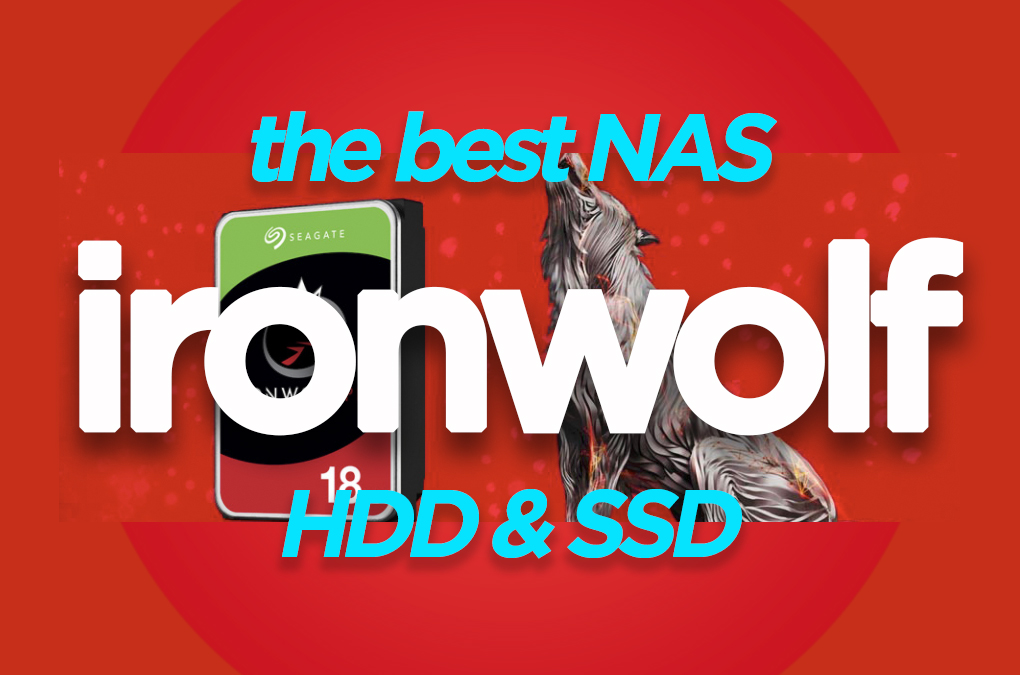
Unfortunately I have had the experience of using lower-priced HDDs in a NAS and having catastrophic data loss. Never again!
You get exactly what you pay for when it comes to using the appropriate HDD for the NAS purpose at hand. For us, we are using our NAS for frequent access, with multiple users reading and writing to the disks, so we need a HDD that can keep up with that and not wear down over time.
That is why my only recommendation is going to be the IronWolf NAS HDD range from Seagate.
This range of HDDs are reliable, fast and durable. Yes they cost more than other NAS HDDs but for very good reason – they don’t break!
The 16TB drive, which is the maximum QNAP NAS enclosures will take, retails for around $500-550. You get them in multiples of 2TB, so don’t feel that 16TB is the only size you can choose. If you are going for the TS-h1277XU and want to max out the storage then you will be looking at $6K for the drives alone. However, with that many users all accessing media at the same time you cannot afford for something to go wrong. In my experience it pays to pay for peace of mind.
I hope you find the best NAS for video editing in this list. There should be more than enough options for any team looking for a NAS for 4k video editing without resorting to external hard drives as well.
If you want more content about storage options, RAID levels and other NAD brands check out my article on Storage Solutions for Post-Production Departments:

For mobile storage solutions check out my article on hard drive compatibility with the iPad Pro:
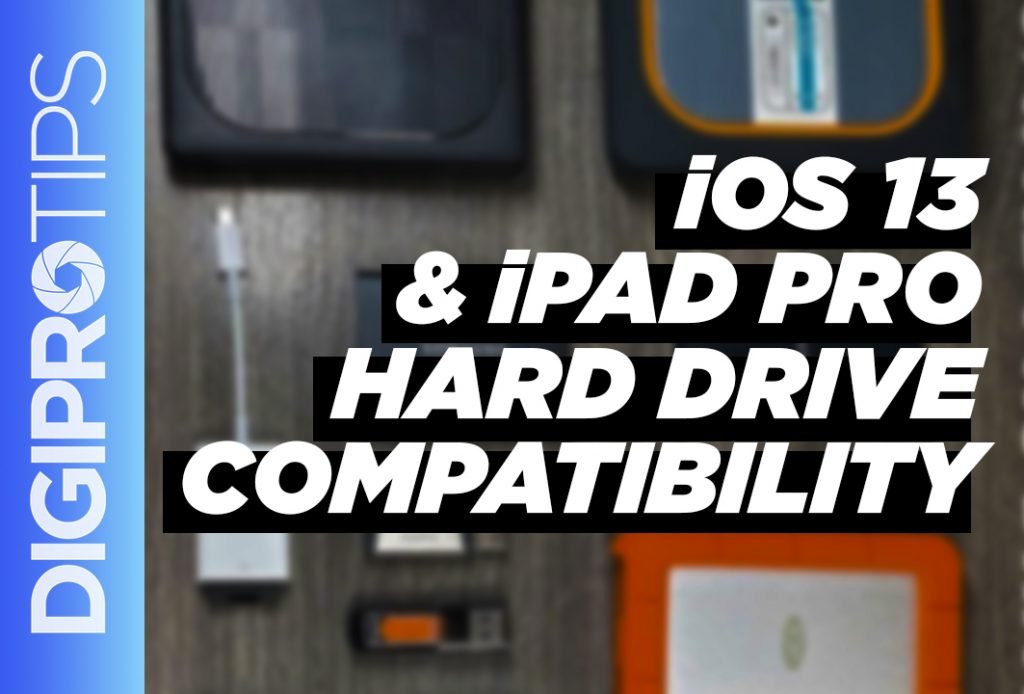
DigiProTips

